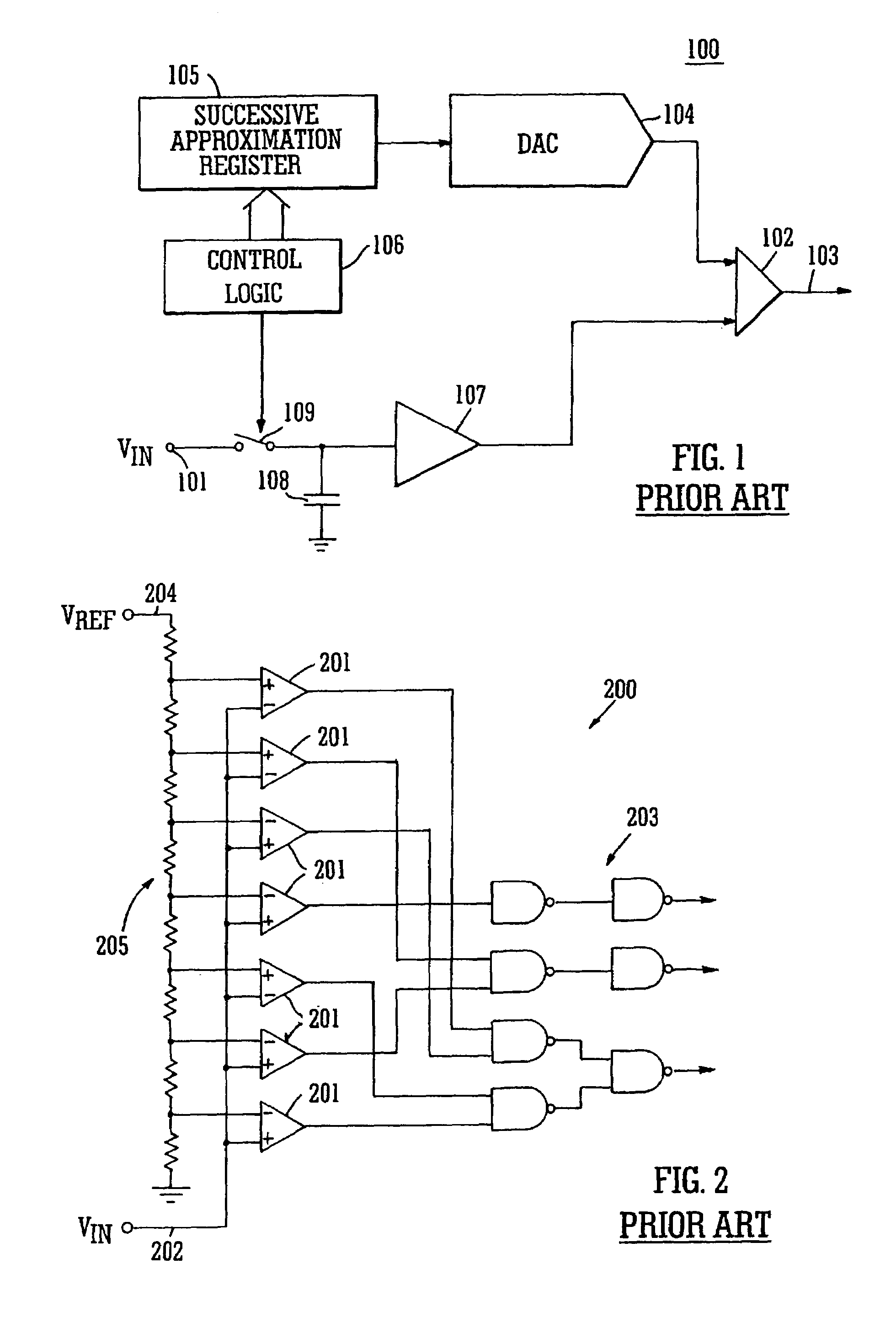Successive approximation analog-to-digital converter with pre-loaded SAR registers
a technology of sar registers and analog-to-digital converters, applied in analogue/digital conversion, transmission systems, instruments, etc., can solve the problems of reducing the signal-to-noise performance of the converter system, reducing the input signal range, so as to achieve effective elimination of negative code transition errors.
- Summary
- Abstract
- Description
- Claims
- Application Information
AI Technical Summary
Benefits of technology
Problems solved by technology
Method used
Image
Examples
Embodiment Construction
[0045]There is described herein a SAR ADC with pre-loaded SAR registers that offers distinct advantages when compared to the prior art. A conventional successive approximation analog-to-digital converter of the prior art is illustrated in FIG. 1 and generally depicted by the numeral 100. A successive approximation register 105, which is “n” bits wide, and loaded by control logic 106, is coupled to the input register of an n-bit digital-to-analog converter (DAC) 104. The DAC output, in turn, is coupled to one of the inputs of a comparator 102. The analog input voltage to be measured, VIN 101, is coupled through a switch 109 to a sample and hold amplifier 107. A switch 109 is interposed between the analog input signal 101 and the input of the amplifier 107. A track / hold control signal from the control logic 106 controls the state of the switch 109.
[0046]When the switch 109 is ON, the input signal 101 is allowed to reach the input of the amplifier 107, with a capacitor 108 to ground. I...
PUM
 Login to View More
Login to View More Abstract
Description
Claims
Application Information
 Login to View More
Login to View More - R&D
- Intellectual Property
- Life Sciences
- Materials
- Tech Scout
- Unparalleled Data Quality
- Higher Quality Content
- 60% Fewer Hallucinations
Browse by: Latest US Patents, China's latest patents, Technical Efficacy Thesaurus, Application Domain, Technology Topic, Popular Technical Reports.
© 2025 PatSnap. All rights reserved.Legal|Privacy policy|Modern Slavery Act Transparency Statement|Sitemap|About US| Contact US: help@patsnap.com



